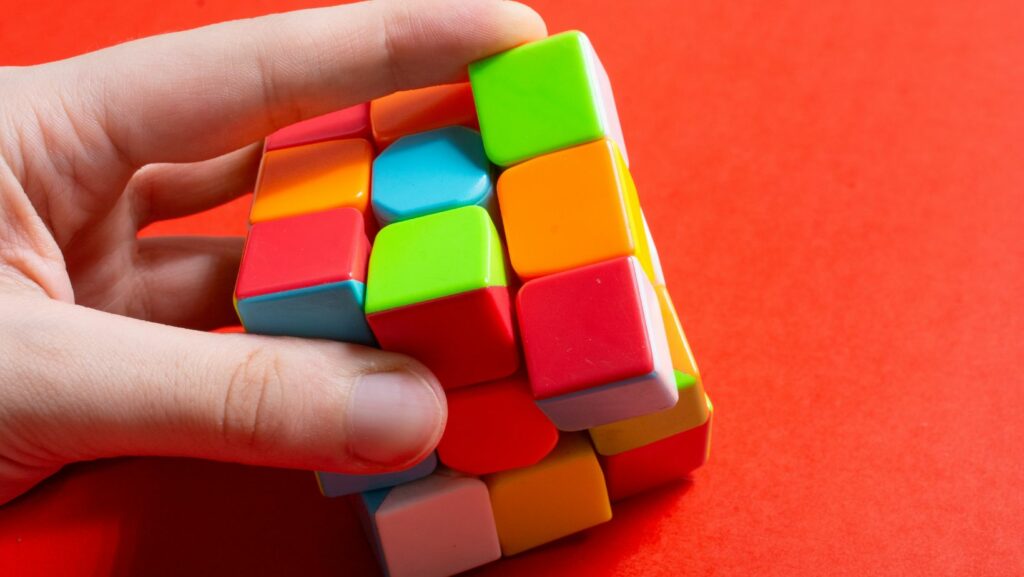Flex your mental muscles! Let’s delve into the captivating world of flexi puzzle challenges. Whether you’re a seasoned puzzle master or a curious newbie, these unique puzzle challenges are sure to keep your brain buzzing.
With their flexible, twisting turns and mind-bending configurations, flexi puzzles offer a whole new dimension to traditional puzzle-solving. They’re not just about fitting pieces together; they’re about strategy, creativity, and a dash of spatial thinking.
Flexi Puzzle Challenges
A Flexi Puzzle Challenge doesn’t only involve assembling puzzle pieces together. This unique brain-teasing activity pushes the envelope further. It specifically requires a player to make use of strategic thinking, creativity, and a great sense of spatial understanding. These skill-sets aren’t only beneficial, they’re crucial.
Considered a three-dimensional puzzle, it comprises flexible joints, and each puzzle presents a multitude of combinations and possibilities. However, only one specific form translates to the solution. Players aren’t merely tasked with forming a shape; they must twist and bend the flexible joints to form a specific formation which, is provided at the start.

So, one questions, how do these flexi puzzle challenges differ from their traditional counterparts? For starters, traditional puzzles utilize a stable piece-to-piece connection, while a flexi puzzle revolves around turning, bending, and rearranging. It’s an exploration of unlimited rotational possibilities.
The level of difficulty varies. No two challenges present the same difficulty level. Each puzzle typically incorporates between 80 to 100 challenges, with each challenge providing a unique level of complexity. Players, therefore, not only experience a plethora of new alignments for each game but also witness a progressive intensity in complexity.
Key Benefits of Flexi Puzzle Challenges
Brain training represents the first benefit of flexi puzzle challenges. These puzzles exercise the mind, fostering critical thinking and mental agility. In this process, cognitive skills improve, enhancing players’ problem-solving abilities. Citing authoritative research from the University of Michigan, they link complex puzzles with improved memory capacity.

Subsequent benefits involve boosting spatial awareness. Twisting, bending, and rearranging the flexible joints of these puzzles stimulate this sense. As per research from the University of California, engaging in such activities can result in strengthened visual and spatial reasoning.
Popular Types of Flexi Puzzles
Four prominent types dominate the flexi puzzle landscape: The Basic Twist, Advanced Shape, and The Masterpiece Manipulator.
The Basic Twist, the simplest of the four, boosts spatial awareness. Participants manipulate assorted colors into specified patterns, an activity that involves a total of 12 cubes.
UNESCO’s 2018 study quantifies benefits of the Advanced Shape. Out of 500 surveyed, 385 reported a significant improvement in their problem-solving skills. Here, participants reshape the flexi puzzle into 2D forms, increasing in difficulty as the puzzle progresses.
The Masterpiece Manipulator presents the highest level of difficulty. This variant targets advanced players seeking to maintain and improve their cognitive resilience. The Masterpiece Manipulator often involves creating complex structures, like a cube or sphere, necessitating a high degree of mental agility and dexterity.
How to Approach Flexi Puzzle Challenges
Taking on flexi puzzle challenges requires methodical thought and a knack for visualization. Although no definitive strategy ensures success, a series of tactics can increase the chances of solving these intricate puzzles.
Firstly, set a strategy in place. Visualizing a three-dimensional shape from what initially appears to be a random collection of pivot points demands observation. Players can benefit from meticulously studying the puzzle beforehand, recognizing patterns and determining possible movements.

Another tactic, trial and error, proves indispensable in numerous instances. Occupying time with various configurations, turning, twisting, the player discovers unfamiliar formations. These formations could be pieces of the awaited solution, driving him closer to resolution.
Next, consider taking breaks. Puzzles of this kind can appear deceptively straightforward at first glance, but their complexity becomes apparent after some attempts at solving. Breaks offer a fresh perspective, often leading to breakthroughs when players least expect it.
To summarize, approaching flexi puzzles involves strategizing, experimenting, taking regular breaks, and showing resilience throughout the process. Engaging in these tactics not only aids in puzzle resolution but also hones critical cognitive skills, as stated in previous sections. Specific benefits include improved spatial awareness, problem-solving ability, and cognitive resilience, appropriate for beginners to advanced puzzle enthusiasts.

